Audi 2006 Annual Report Download - page 143
Download and view the complete annual report
Please find page 143 of the 2006 Audi annual report below. You can navigate through the pages in the report by either clicking on the pages listed below, or by using the keyword search tool below to find specific information within the annual report.-
 1
1 -
 2
2 -
 3
3 -
 4
4 -
 5
5 -
 6
6 -
 7
7 -
 8
8 -
 9
9 -
 10
10 -
 11
11 -
 12
12 -
 13
13 -
 14
14 -
 15
15 -
 16
16 -
 17
17 -
 18
18 -
 19
19 -
 20
20 -
 21
21 -
 22
22 -
 23
23 -
 24
24 -
 25
25 -
 26
26 -
 27
27 -
 28
28 -
 29
29 -
 30
30 -
 31
31 -
 32
32 -
 33
33 -
 34
34 -
 35
35 -
 36
36 -
 37
37 -
 38
38 -
 39
39 -
 40
40 -
 41
41 -
 42
42 -
 43
43 -
 44
44 -
 45
45 -
 46
46 -
 47
47 -
 48
48 -
 49
49 -
 50
50 -
 51
51 -
 52
52 -
 53
53 -
 54
54 -
 55
55 -
 56
56 -
 57
57 -
 58
58 -
 59
59 -
 60
60 -
 61
61 -
 62
62 -
 63
63 -
 64
64 -
 65
65 -
 66
66 -
 67
67 -
 68
68 -
 69
69 -
 70
70 -
 71
71 -
 72
72 -
 73
73 -
 74
74 -
 75
75 -
 76
76 -
 77
77 -
 78
78 -
 79
79 -
 80
80 -
 81
81 -
 82
82 -
 83
83 -
 84
84 -
 85
85 -
 86
86 -
 87
87 -
 88
88 -
 89
89 -
 90
90 -
 91
91 -
 92
92 -
 93
93 -
 94
94 -
 95
95 -
 96
96 -
 97
97 -
 98
98 -
 99
99 -
 100
100 -
 101
101 -
 102
102 -
 103
103 -
 104
104 -
 105
105 -
 106
106 -
 107
107 -
 108
108 -
 109
109 -
 110
110 -
 111
111 -
 112
112 -
 113
113 -
 114
114 -
 115
115 -
 116
116 -
 117
117 -
 118
118 -
 119
119 -
 120
120 -
 121
121 -
 122
122 -
 123
123 -
 124
124 -
 125
125 -
 126
126 -
 127
127 -
 128
128 -
 129
129 -
 130
130 -
 131
131 -
 132
132 -
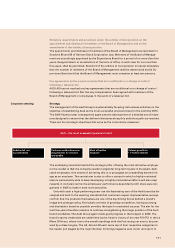 133
133 -
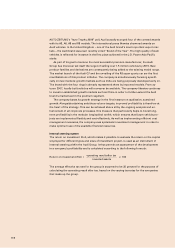 134
134 -
 135
135 -
 136
136 -
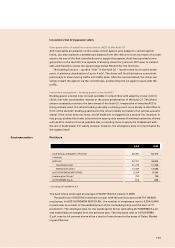 137
137 -
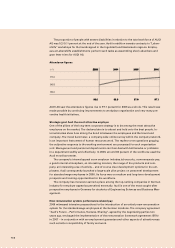 138
138 -
 139
139 -
 140
140 -
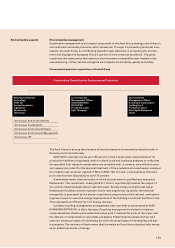 141
141 -
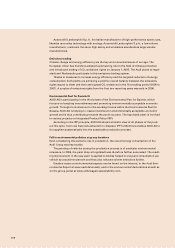 142
142 -
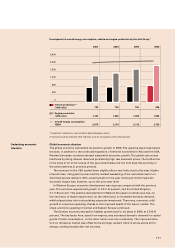 143
143 -
 144
144 -
 145
145 -
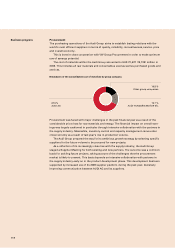 146
146 -
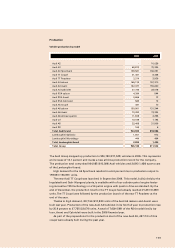 147
147 -
 148
148 -
 149
149 -
 150
150 -
 151
151 -
 152
152 -
 153
153 -
 154
154 -
 155
155 -
 156
156 -
 157
157 -
 158
158 -
 159
159 -
 160
160 -
 161
161 -
 162
162 -
 163
163 -
 164
164 -
 165
165 -
 166
166 -
 167
167 -
 168
168 -
 169
169 -
 170
170 -
 171
171 -
 172
172 -
 173
173 -
 174
174 -
 175
175 -
 176
176 -
 177
177 -
 178
178 -
 179
179 -
 180
180 -
 181
181 -
 182
182 -
 183
183 -
 184
184 -
 185
185 -
 186
186 -
 187
187 -
 188
188 -
 189
189 -
 190
190 -
 191
191 -
 192
192 -
 193
193 -
 194
194 -
 195
195 -
 196
196 -
 197
197 -
 198
198 -
 199
199 -
 200
200 -
 201
201 -
 202
202 -
 203
203 -
 204
204 -
 205
205 -
 206
206 -
 207
207 -
 208
208 -
 209
209 -
 210
210 -
 211
211 -
 212
212
 |
 |

1 4 1
Development in overall energy consumption, vehicle and engine production by the Audi Group 1)
1,600
1,200
800
400
0
2,000
2,400
Vehicle production 2)
(‘000 units)
Engine production
(‘000 units)
2004
745
1,486
2,114
2005
765
1,695
2,139
2006
826
1,896
2,156
Overall energy consumption
(GWh)
2003
732
1,343
2,070
1) Ingolstadt, Neckarsulm, Győr and Sant’Agata Bolognese plants
2) excluding Audi A4 Cabriolet, RS 4 Cabriolet, Audi Q7 and aspects of the A3 production
Global economic situation
The global economy maintained its dynamic growth in 2006. The upswing was broad-based,
because, in addition to the continued expansion of national economies in Asia and the USA,
Western European countries enjoyed substantial economic growth. The global upturn was
held back by rising interest rates and persistently high raw materials prices. The further rise
in the price of oil in the course of the year nevertheless did not hold back the economy to
the same extent as in previous periods.
The economy in the USA cooled down slightly after a very lively start to the year. Higher
interest rates, rising petrol prices and the marked weakening of the real estate sector un-
dermined private demand. With overall growth for the year running at 3.4 (3.2) percent,
economic output was, however, up on the prior-year level.
In Western Europe, economic development was vigorous compared with the previous
year. The eurozone experienced growth of 2.6 (1.4) percent, and the United Kingdom
2.7 (1.9) percent. This positive development in Western European countries was due, on
the one hand, to higher exports and, on the other hand, to increased domestic demand,
which played a key role in stimulating corporate investment. There was, moreover, mild
growth in consumer spending, thanks to the improved health of the labour market. The
sharp economic upswing in Central and Eastern Europe continued.
The German economy enjoyed its highest growth rate for six years in 2006, at 2.5 (0.9)
percent. The key factor here, apart from exports, was increased domestic demand for capital
goods. Private consumption, on the other hand, rose only moderately. The improved situa-
tion on the labour market was offset by the stronger upward trend in prices above all for
energy, eroding households’ real incomes.
Underlying economic
situation
